Easter Island is one of the most remote places you can visit. It has, in fact, the world’s most remote commercial airport (no other commercial airport is farther away from the next one than IPC) and it is on many travelers’ bucket lists. In 2018, Travel-Dealz editor Felix visited the island for little more than 24 hours and shares his experience.
For more than twenty years, I’ve been traveling with my father at least once a year and usually on a global scale. For 2018, we decided to plan a trip to South America, a part of the world I didn’t really want to visit until earlier that year. In January, I’ve spent five wonderful weeks in Brazil, crushing any prejudice concerning that part of the world map. Since my father always wanted to visit Easter Island, he booked a roundtrip from Santiago de Chile.
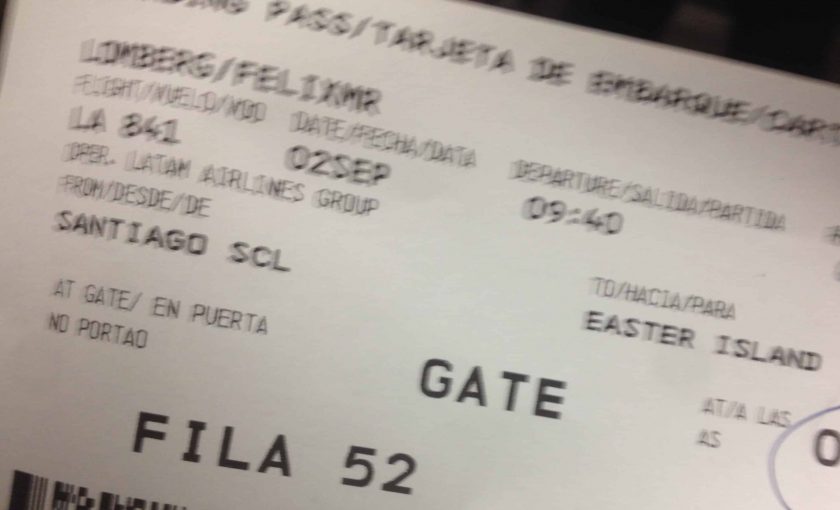
Day 1 – Arriving & Visiting Hanga Roa
Since Easter Island is a political part of Chile as well, we expected this to be a domestic flight. Interestingly, it was handled as an international departure by airline and airport. As an aviation enthusiast, I was really looking forward to this flight. It would’ve been my first time aboard a Boeing 787 Dreamliner, which was scheduled for both flights.
The Dreamliner and the White Nightmare
Sadly, it would’ve been, as a rather mature Boeing 777-200 in all white livery waited at our boarding gate. This was a last-minute lease by LATAM, as the aircraft’s interior was a mixup of the Chilean carrier and its former owner, Singapore Airlines. The planes’ interior was held together by bubble gum and duct tape (this is not a metaphor). The best thing about this was clearly the spacious 3-3-3 seating pattern, a dying phenomenon on Triple Sevens.
Roughly four and a half hours later, we touched down on Mataveri International airport. It is always fun to walk across any apron, especially when you’re walking away from a huge beast like a 777. Directly after arrival, you get the first of many chances to buy an entrance ticket to all National Park sites across the island at roughly €80. It includes entrance fees to all to excavation sites and places of interest, but I would not recommend it for a short stay.
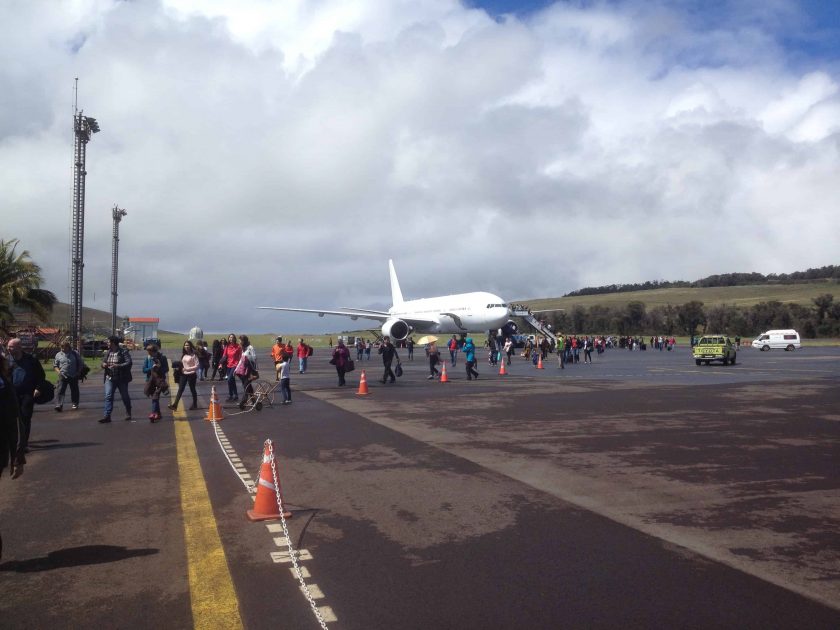
Arriving on Easter Island. 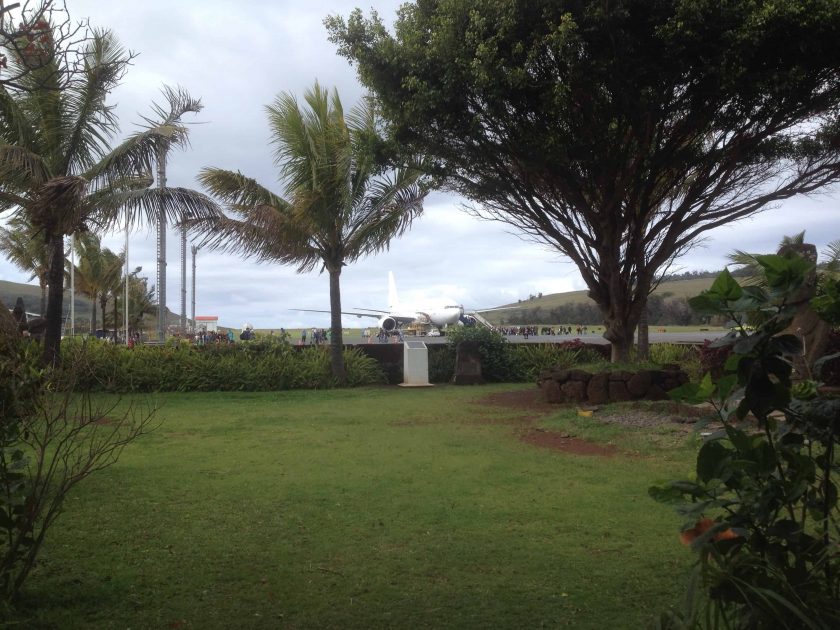
Departing from Easter Island, a day later.
The island itself is famous for its moai statues, that are unique to this place. Originally, they have been erected as tombs for indigenous tribesman. These statues are more than 500 years old. Since the moai are the main catalys for tourism, quite a few new ones have found their way to the town center of Hanga Roa, the only settlement on the island. One even guards the departure hall (actually more of a departure terrace) of Mataveri airport.
Hanga Roa and Vicinity
After clearing a small customs counter, our host picked us up at the airport. We quickly stored our luggage in our room and went off to explore Hanga Roa. For a city of this size, such a venture can take up to an entire day – if you walk really slowly, stop for at least three extended coffee and lunch breaks and fall asleep during one of them. Otherwise, three hours on a cloudy afternoon will suffice. Downtown Hanga Roa consists basically of a single main street and another street running parallel to the shoreline. Alongside these streets, you’ll find supermarkets and restaurants mixed with obligatory tourist shops selling moai shaped gadgets.
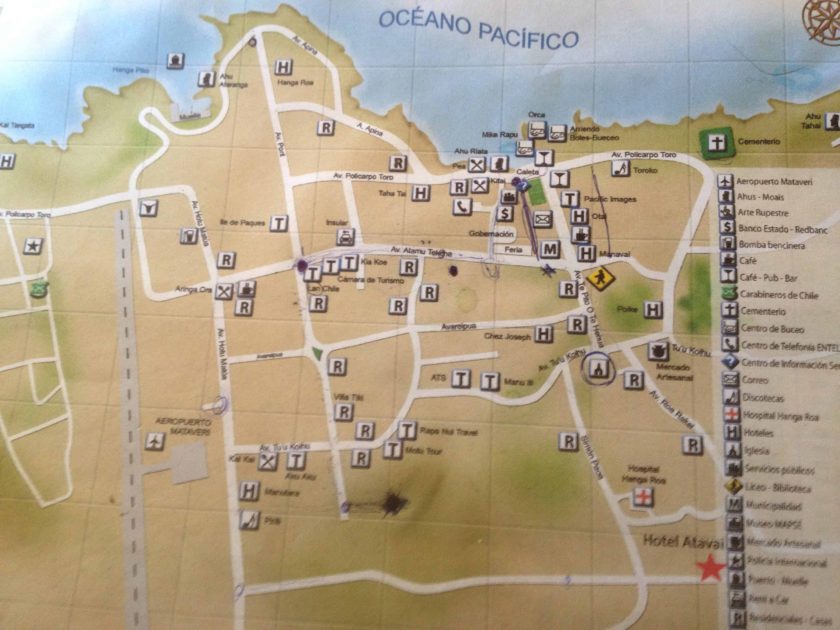
Map of Hanga Roa 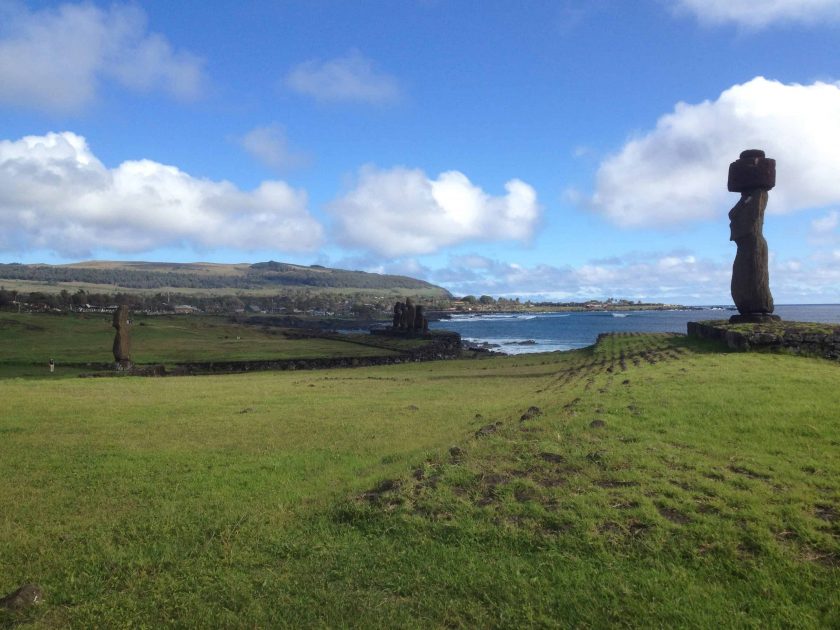
Ancient moai statues Ahu Tahai, in walking distance from the city. 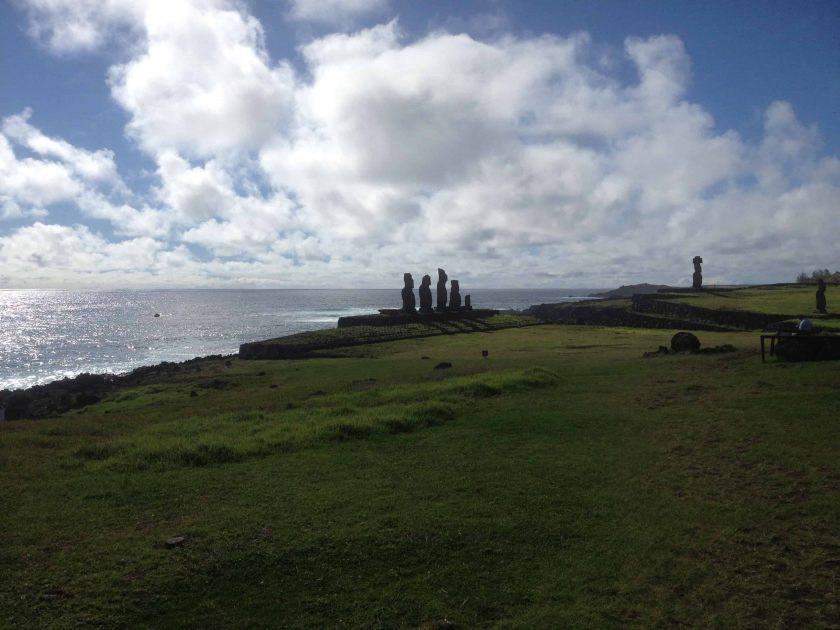
Another shot of Ahu Tahai. 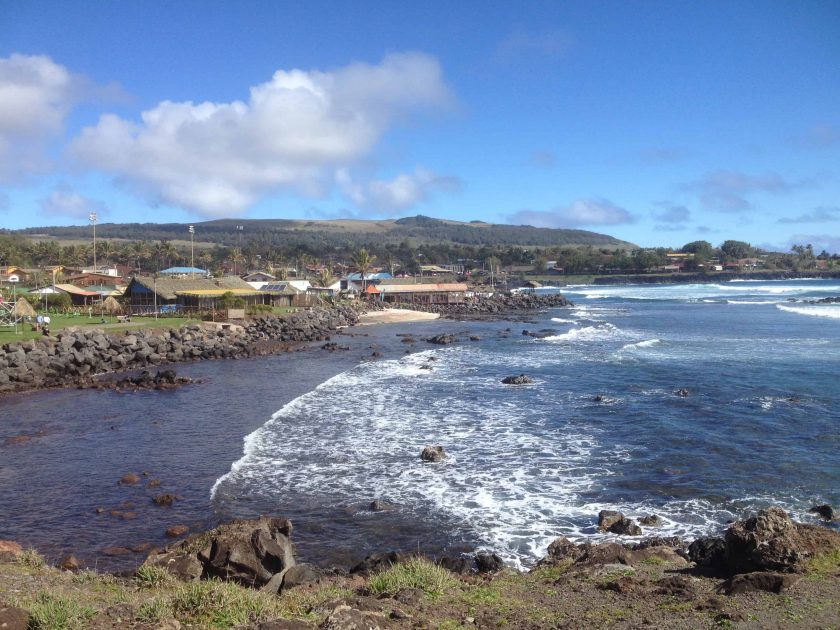
The shore line of Hanga Roa. 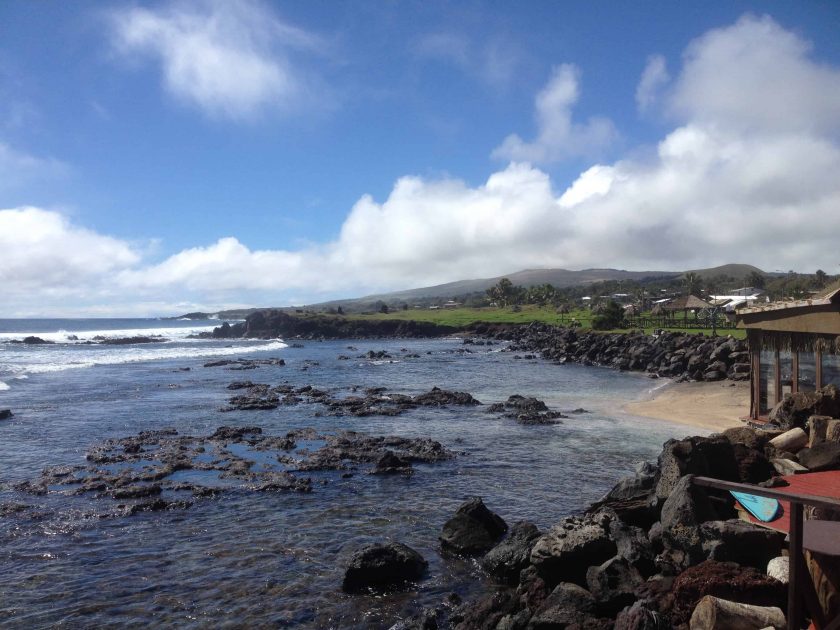
Many rocks in shallow water – not a good place to go swimming. 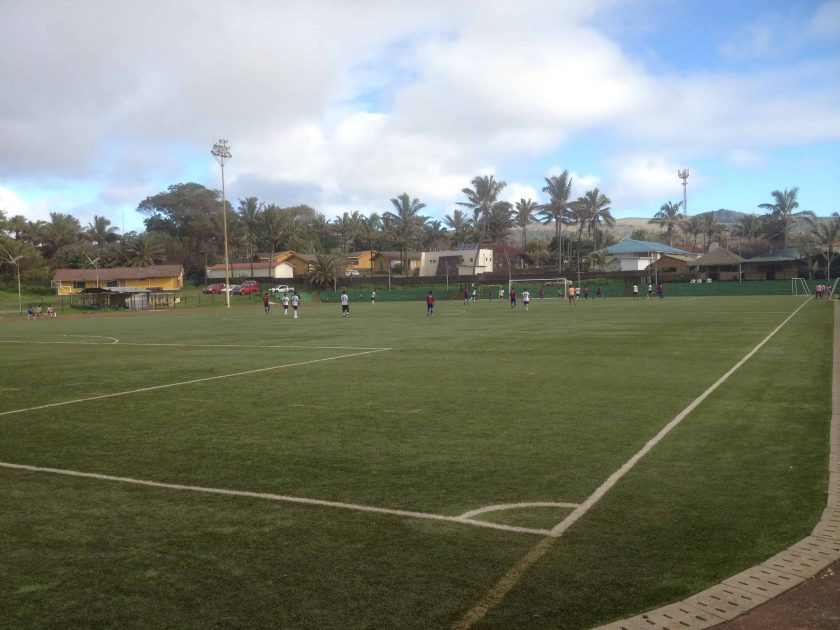
Football in paradise. Not expected, but this is Chile after all.
Right outside the city, you can find Ahu Tahai, one of the sites where ancient moai statues have been re-erected. It is the only site where you can get near original moai without purchasing a ticket. We strolled back to the city center and found a restaurant near the islands’ lone sports venue, a football field. We were lucky enough to catch an exhibition game, making this the most surreal place I’ve ever watched live football.
After a rather expensive dinner consisting of fries and minced meat for €15, we got back to our hotel room, opened a bottle of Chilean red wine and tried to enjoy the unique star constellation over this little island in the middle of nowhere. This did not go well, as it remained cloudy during our entire stay. Disappointed by missing out on one of the island’s main sights, we went to sleep.
Day 2 – A Trip Around the Island
For the second day, we had pre-arranged a trip around the island. Local tour guides are generally open to taking you around the island in their private cars. While they are mostly Spanish speaking, there are quite a few that speak English. Our guide was a former LAN flight attendant who used to visit the island for work regularly, fell in love during a layover and now lives there. It is also possible to hike around the island or join several spots during a biking tour – but that is not an option when you’re leaving the island on the same afternoon.
Free Roaming Horses
The first thing you’ll notice when leaving the township of Hanga Roa is that there is a large number of free-roaming horses on the island. When asked, our host replied that they are privately owned and domesticated, but allowed to move around at their own free will. This surely gives the island a breath of wilderness.
Our first stop was at the edge of one of three extinct volcanoes – Rano Kau. It is basically cut off from the rest of the island by the runway of Mataveri airport. Inside the crater is a huge lake, that still emits a sulfuric scent. From there on, we had a look at the island’s main attractions, the moai statues of Ahu Tongariki and the workshop Rano Raraku.
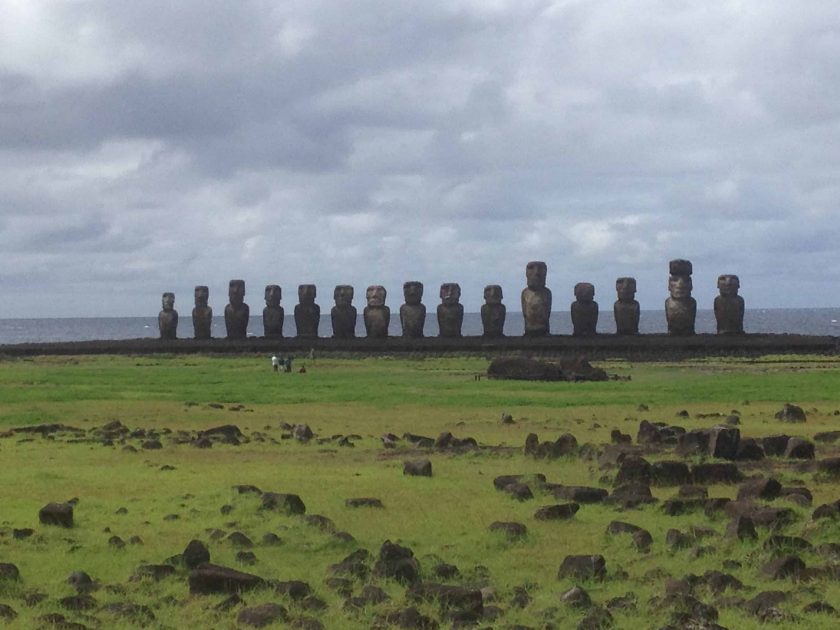
Ahu Tongariki – basically the Chilean national team in 1500. 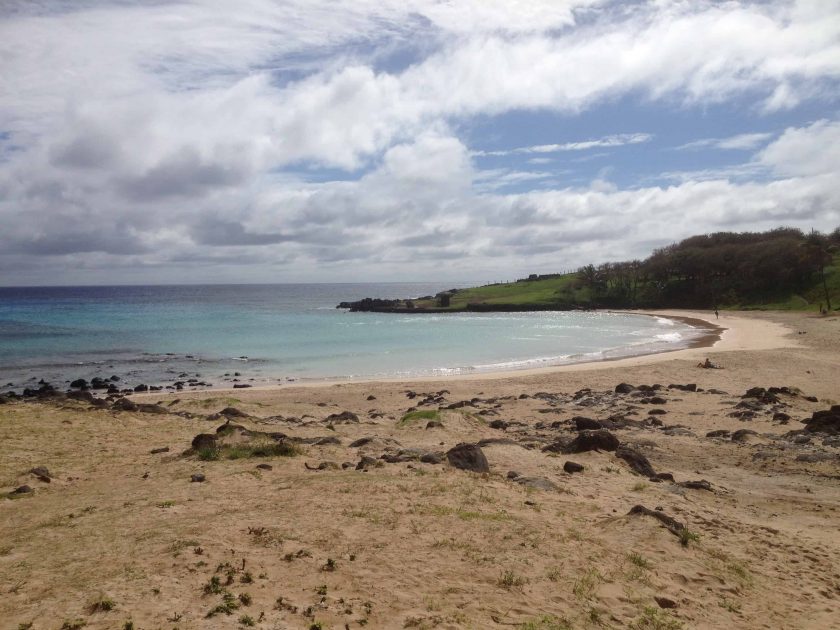
Anakena beach – the only one on the island. 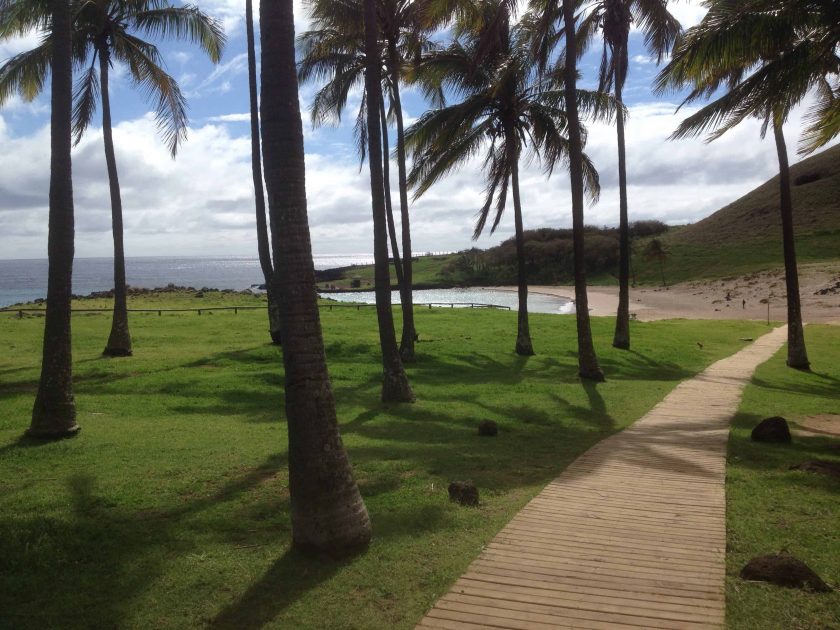
This picture screams “exotic island”. 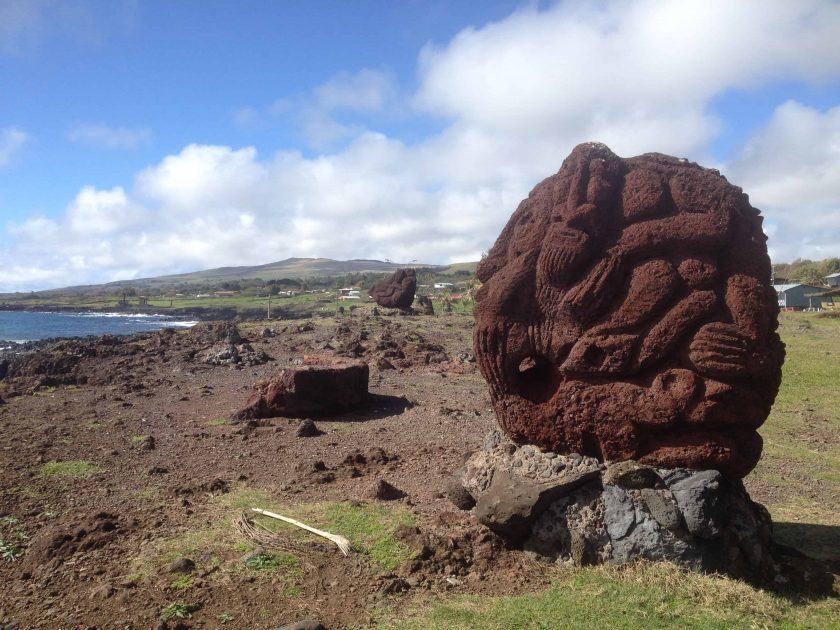
A stone monument on an island full of stone monuments. 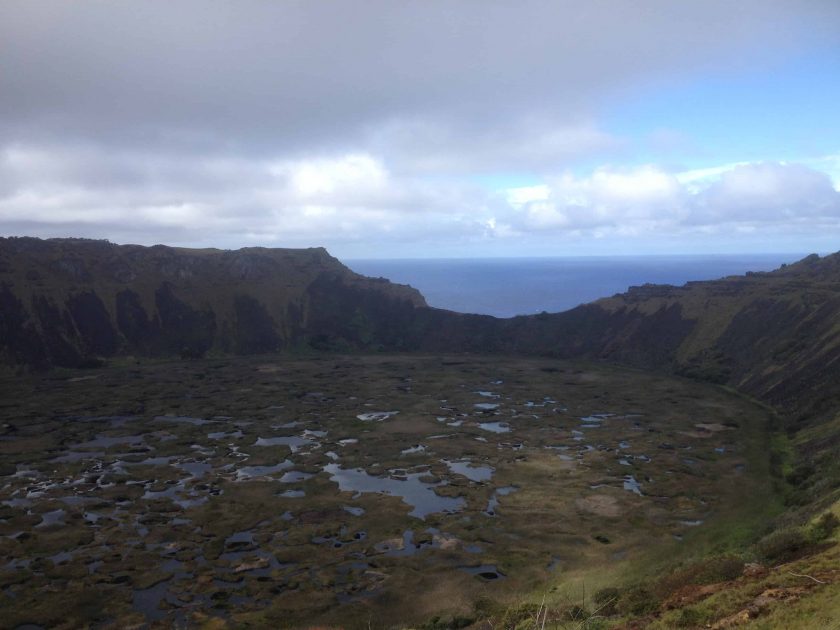
Crater lake at Rano Kau.
Ahu Tongariki & Rano Raraku
Ahu Tongariki features the most famous collection of moai statues. Here you can find fifteen statues standing side by side. One of them is the heaviest completed moai, weighing roughly 86 tonnes. The name ahu describes the platforms on which the statues are erected.
Some facts about moai statues
Moai are the large stone statues Easter Island is famous for. The island’s Polynesian inhabitants built them long before the first European voyagers arrived on the island.
The statues are actually tombs, erected in honor of past leaders. Islanders believed that by building a moai, positive traits like intelligence, strength, or prowess in the battles of those leaders would be preserved and passed on to the next generation. Since every leader already received the traits of those before him, the statues grew bigger and bigger, because all past talents and wisdom had to be accumulated.
Some of the statues wear read hats called pukao, made of hardened lava. This was done to represent their actual physical appearance, as only leaders were allowed to tie their hair up to a bun and dye it red. Almost all statues face the interior of the island. The lone exception is a single statue in the port of Hanga Roa, which was built for tourism reasons in the 1970s. It looks across the sea, waiting for incoming vessels.
At the mountainside of Rano Raraku, you can find the workshop of the island. While inhabited by different tribes who regularly waged war against each other, all moai statues ware made with rocks from this mountain. You will find a huge amount of unfinished moai and can stroll through them like being in a park littered with gigantic stone faces.
Our last stop before we returned to the airport was the island’s only beach, Anakena. It is very remote and surrounded by only a few shops (of course), green grass and palm trees, that seem obviously cultivated. The beach is small but beautiful and the sole option if you want to tan with the occasional swim in the Pacific Ocean. Our host returned us safely to the airport afterward. The same all-white Boeing 777 that brought us to the island awaited us there to take us back to Santiago.
Final thoughts
With green hills on each side and large numbers of free-roaming horses surrounding the lone island road, you cannot help to think that this is one of earth’s most beautiful, untouched and innocent places.
If you’re looking to cram as much action into 24 hours as possible, a single day on Easter Island will satisfy you. I can imagine that taking a couple of more days, just to relax and enjoy the remoteness of the place is very appealing. But I can imagine as well that staying a week or longer can quickly turn into an excruciatingly boring (and rather expensive) experience.
While prices are high and tourist attractions are rare and very similar to each other – it is still the only place on the entire planet where you can find said attractions.
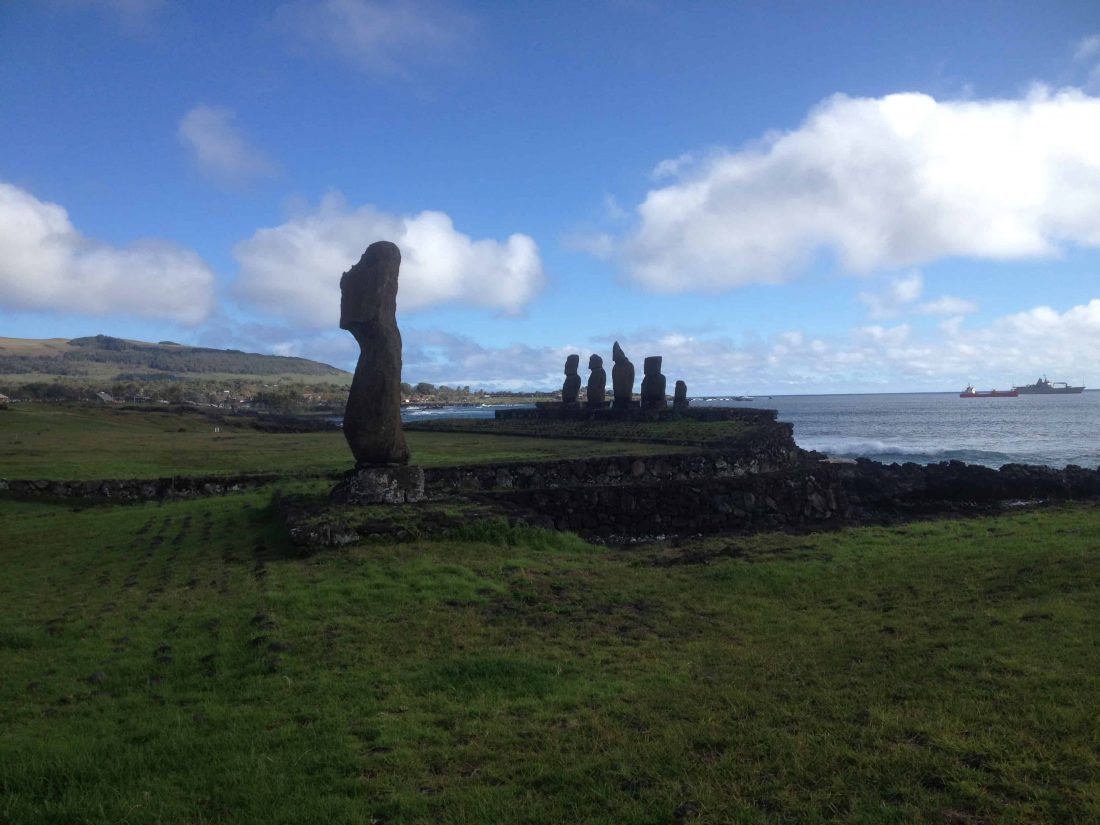
Comment (1)
After I have seen the video from Christian LeBlanc I would not even consider flying there – looking on the attitude of the local people..